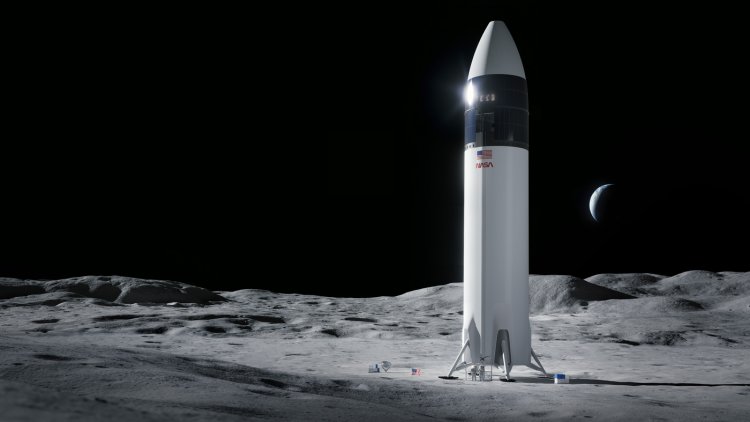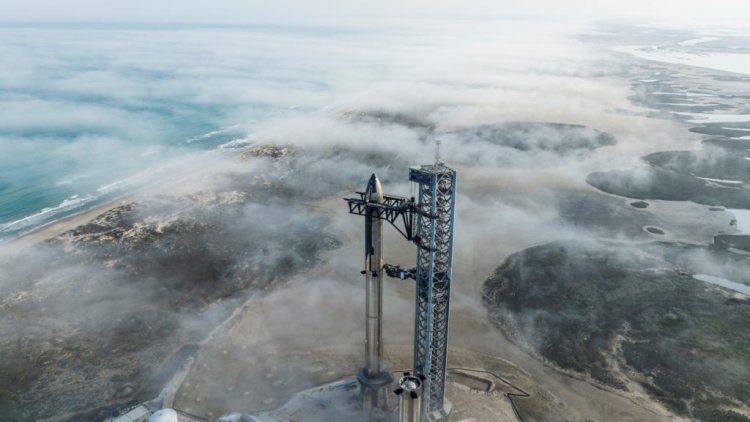How SpaceX's First Orbital Starship Launch Will Work
The test flight will take off from South Texas, cross the Gulf of Mexico, and land near Hawaii.
|
What is a starship?
The Starship Super Heavy is an inventive reusable rocket propelled by a multitude of Raptor engines, fueled by liquid methane (CH4) and liquid oxygen (LOX), and built based on the same theory as the Falcon-9 rockets. Its ultimate objective is to usher in a new era of interplanetary human exploration, and thanks to the enterprising leadership of Elon Musk, ingenious technological breakthroughs have been infused to ensure the rocket can accomplish its missions and safely return to Earth to be revitalized for subsequent flights.
The Starship Super Heavy deemed the most ponderous and dynamic rocket to date, harbors the capacity to haul 150 tons of freight for voyages outside the limits of Earth's orbit, producing an astounding 16,733,085 pounds of thrust using 33 Raptor engines.
33 Raptor engine static fire attempt soon pic.twitter.com/wrsWIDt4Vt
— SpaceX (@SpaceX) February 9, 2023
Why is this important?
Musk has envisioned a variety of applications for the Starship spacecraft. The spacecraft boasts a heavy-lift capability, ranging from 90 to 136 metric tonnes, which is superior to that of the SLS, which is only capable of lifting between 23 and 41 metric tonnes, making it highly advantageous for missions requiring large payloads.
However, the spacecraft's function extends beyond just lifting cargo. NASA has selected Starship as the landing vehicle for the Artemis III mission, which aims to return human beings to the surface of the moon. The mission includes the Orion spacecraft taking off from Earth and heading towards the moon, followed by Starship. While orbiting the moon in a unique orbit known as a halo orbit, the two spacecraft will merge, and the astronauts will switch to Starship, which will then land on the moon.

SpaceX is making preparations for a momentous launch of its amalgamated Super Heavy rocket booster and Starship upper stage into the celestial heavens.
On Monday, the 17th of April, the Starship deep-space rocket system is scheduled to lift off from the SpaceX Starbase establishment located in the vicinity of Boca Chica, Texas. The time frame for the launch spans 150 minutes, and it will commence at 8 a.m. EDT (1200 GMT).
The gargantuan Starship, which is bifurcated into two stages and towers at a prodigious altitude of 394 feet (120 meters), was assembled on the orbital launch mount at Starbase on the fifth of April. As of now, it is all set for examination and testing, in readiness for the impending launch.
The Starship is comprised of two core constituents - an immense first-stage booster, commonly known as Super Heavy, and an upper-stage spaceship christened as Starship. During the trial voyage, the designated prototypes that will be deployed are Ship 24 and Booster 7.
The Starship, with its test flights serving as one of the most captivating developments in the aerospace industry, has ignited excitement for its first orbital expedition, which has been anticipated for a prolonged period. Despite the impending trial run, the expedition's success is merely a single stride towards the final goal of the Starship's complete operational integration.
Upon the Starship's launch, the journey will transpire for approximately 90 minutes. The expedition will initiate at Starbase, then proceed towards the east over the Gulf of Mexico, traverse the Straits of Florida, and subsequently conclude its trajectory near Hawaii.
Despite the Super Heavy and Starship possessing the capacity for full reusability, Booster 7 and Ship 24 will solely be implemented for this specific expedition. In contrast to the customary first stages of SpaceX's Falcon 9 and Falcon Heavy rockets, which typically execute vertical, propelled landings on stable ground or a "drone ship," the aforementioned vehicles will submerge and settle in the ocean.
SpaceX's stated mission description specifies that Booster 7's thrust will cease after 169 seconds into the flight, with detachment from Ship 24 following three seconds later. The booster will then reignite some of its engines to facilitate its return to Texas, ultimately making a controlled splashdown about 20 miles (32 kilometers) away from the coast in the Gulf of Mexico, roughly eight minutes after departing. Following three minutes of flight, the Starship upper stage's six Raptor engines will initiate, propelling the craft eastward.
These engines will continue to burn for about 6.5 minutes, culminating in shutdown 560 seconds after launch. If everything proceeds as planned, Ship 24 will attain what is referred to as orbital velocity, situated at an altitude of roughly 150 miles, or approximately 17,500 mph (28,160 kph) for low Earth orbit. However, Ship 24 will not complete a full circuit of Earth's orbit. Next, Starship is slated for a high-velocity re-entry into Earth's atmosphere, which is designed for testing purposes.
If all goes according to plan, the vehicle will make a controlled splashdown around 62 miles (100 km) off the northwest coast of Kauai, an island in the Hawaiian archipelago, 90 minutes after departing from Boca Chica. The purpose of this test flight is to gather essential data for SpaceX as it works to make Starship fully operational. According to a document submitted to the U.S. Federal Communications Commission (FCC) in 2021, SpaceX aims to obtain a vast amount of data during the test flight to scrutinize the intricacies of entry dynamics, thus deepening their comprehension of the vehicle's performance in a highly demanding flight regime that is difficult to predict or simulate accurately.
The amassed data will serve as the foundation for any changes to the vehicle's design or concept of operations (CONOPs) after the first flight and enhance the accuracy of their internal simulations.
SpaceX aspires to make Starship a primary means of ferrying cargo and crew to the moon and Mars in the future, while also significantly reducing launch costs due to its reusability.
What's Your Reaction?
























